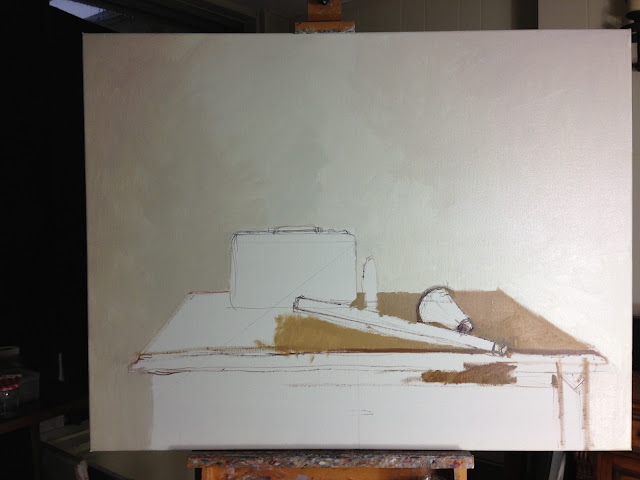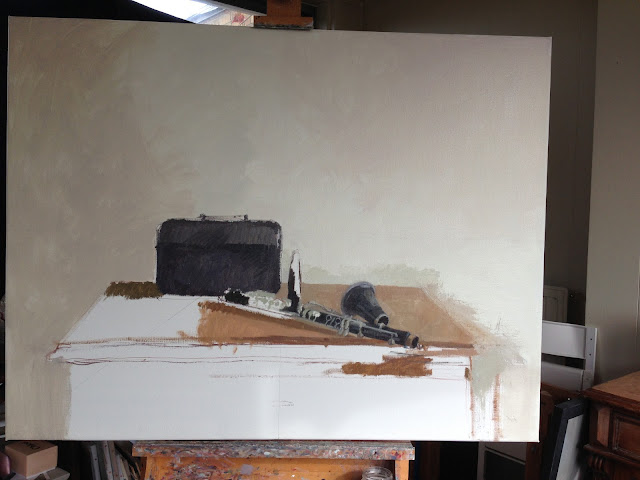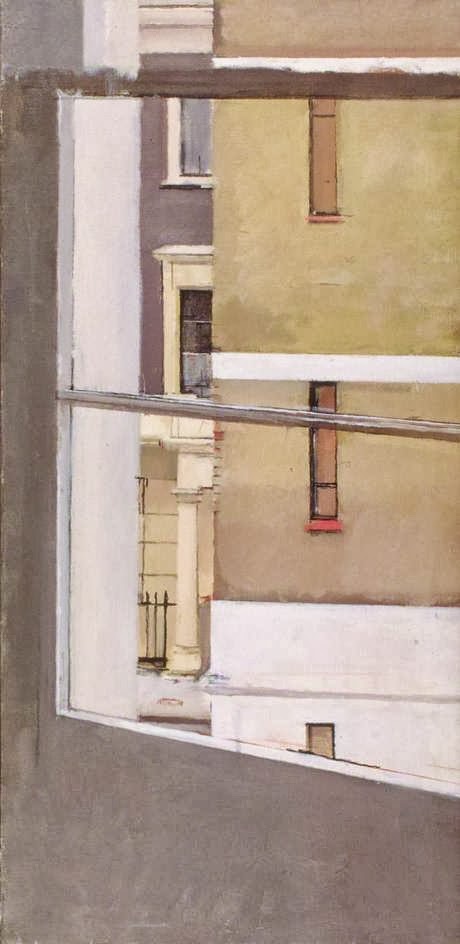I have had a long Mediterranean summer visiting my family and now I am back in London ready for the next busy months. I haven't been painting much while I was away but I still managed a couple of oil sketches that I am turning into larger works.
What I found out about landscape painting is that it is indeed possible for me to get engaged with it as long as I have a deep and meaningful connection to what I am painting.
This was painted from an oil sketch, a drawing and a black and white photo of a stretch of coast close to my birthplace.
_________________________________________________________________________________
I also have been very busy with, yes you guessed, Print Solo ! The website is almost ready to go online and soon it will start accepting applications from potential sellers. If you don't know about Print Solo yet ( how is that possible?) here's a video that explains what it is. I am entirely to blame for the idea and its execution.
_________________________________________________________________________________
Because of my involvement with Print Solo I have stopped teaching regularly but I will be doing a weekend Masterclass at the Art Academy in London on the 10th and 11th of October. I will try to cram as much information as possible in those two days, talking about palette, composition, tonal range, paint application You can find all the info here. If you wish to attend please book well in advance.
_________________________________________________________________________________
And finally my very nice gallerist Kathryn Bell from Fine Art Consultancy will be showing one of my works at the 20/21 British Art Fair at the Royal College of Art in London next week. It's always a very good fair with the best galleries that deal in British art. Please get in touch if you want a free invitation to print out. And next week the ubiquitous Kathryn will also show my work at the Affordable Art Fair in New York.
What I found out about landscape painting is that it is indeed possible for me to get engaged with it as long as I have a deep and meaningful connection to what I am painting.
This was painted from an oil sketch, a drawing and a black and white photo of a stretch of coast close to my birthplace.
 |
| A Place of Untold Secrets, 102x87 cm, oil on linen |
_________________________________________________________________________________
I also have been very busy with, yes you guessed, Print Solo ! The website is almost ready to go online and soon it will start accepting applications from potential sellers. If you don't know about Print Solo yet ( how is that possible?) here's a video that explains what it is. I am entirely to blame for the idea and its execution.
_________________________________________________________________________________
Because of my involvement with Print Solo I have stopped teaching regularly but I will be doing a weekend Masterclass at the Art Academy in London on the 10th and 11th of October. I will try to cram as much information as possible in those two days, talking about palette, composition, tonal range, paint application You can find all the info here. If you wish to attend please book well in advance.
 |
| A recent commission: G., oil on panel, 40x50cm |
_________________________________________________________________________________
And finally my very nice gallerist Kathryn Bell from Fine Art Consultancy will be showing one of my works at the 20/21 British Art Fair at the Royal College of Art in London next week. It's always a very good fair with the best galleries that deal in British art. Please get in touch if you want a free invitation to print out. And next week the ubiquitous Kathryn will also show my work at the Affordable Art Fair in New York.


















































































